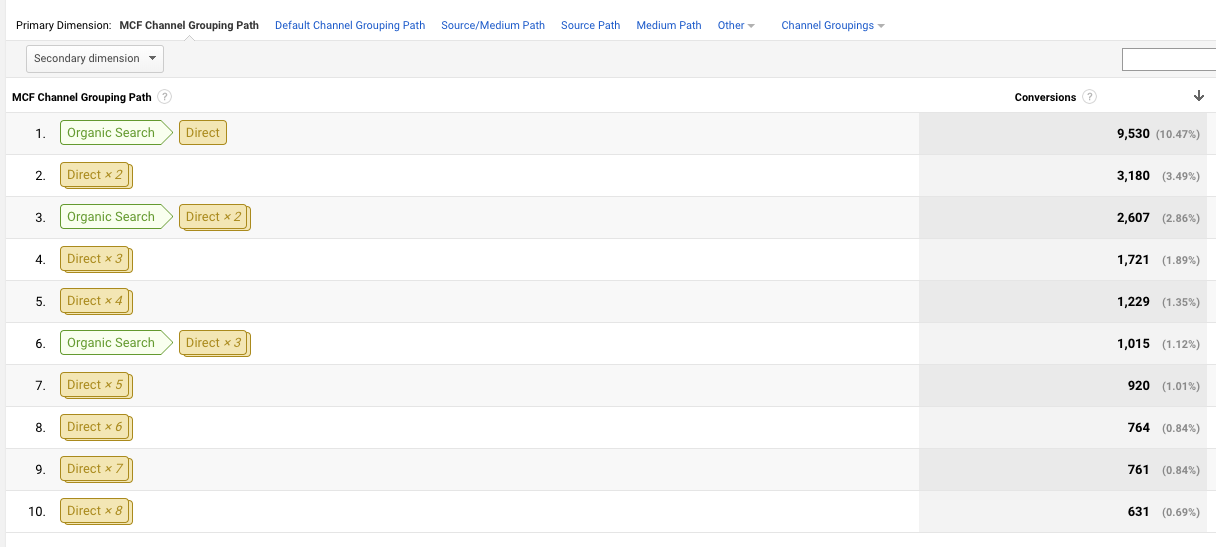In addition to the Time Lag report in Google Analytics, another multi-channel marketing attribution report is the Top Conversion Path report. The Top Conversion Path report shows each unique conversion path (the touchpoints within the buyer’s journey) that led to the conversion, the number of conversions from each path and the value of each conversion.
In this tutorial, learn how to use the Top Conversion Path report in Google Analytics.
What is the Top Conversion Path Report?
The Top Conversion Path report will show you popular referral paths and the number of times a visitor interacted with each channel (or touchpoint) before converting on your site. It is a useful report that gives users insights on your company’s conversion path and the behavior associated with the conversion, which will help you effectively market across channels.
How to Use the Top Conversion Path Report
The Top Conversion Path report is nested in the Conversions tab under ‘Multi-Channel Funnels.’ From there you’ll see the report:

By going into the Top Conversion Path report, you can look at all of your potential conversion paths and, as an example, you can search for ‘Display’ and the report will tell you where a conversion in ‘Display’ happens at an impression standpoint. This means, how many people say a Display AD, clicked the AD and later came on to the site and converted.
From the Top Conversion Path report, you can filter your report by campaign and get as granular as you’d like with your traffic source information. By filtering and adding granularity to your Top Conversion Path report, you can see if ‘Display’ and ‘Organic’ channels have overlap and start to understand where you can make effective changes to your channels.
To learn more about the Top Conversion Path, watch this video.
Conclusion
The Top Conversion Path report is a great place to go before you turn on or off certain types of marketing campaigns to simply understand and make sure you’re not losing something that’s actually performing and contributing to the final conversion.